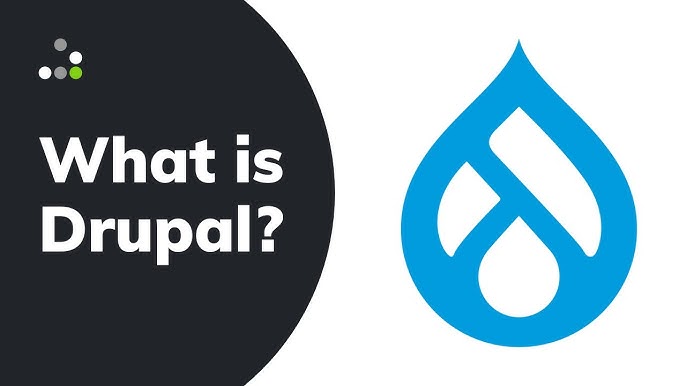Drupal is a powerful and flexible open-source content management system (CMS) used for building and managing websites and web applications. It is known for its robustness, scalability, and flexibility, making it suitable for a wide range of projects, from simple blogs to complex enterprise websites.

Key Features of Drupal:
- Modular Architecture: Drupal’s core functionality can be extended with modules, which are add-ons that provide additional features such as SEO tools, e-commerce integration, social media sharing, etc.
- Content Types: Drupal allows you to define custom content types (like articles, events, or products), making it easy to structure and manage different types of content.
- Taxonomy: You can create custom vocabularies and tags to organize and categorize your content. This makes Drupal especially useful for content-heavy websites.
- Themes: Drupal supports a wide variety of themes, allowing you to customize the look and feel of your website. You can either use pre-built themes or develop custom ones.
- User Roles and Permissions: Drupal allows you to define various user roles (such as admin, editor, contributor) and assign different permissions to those roles. This feature is essential for websites with multiple users or editorial teams.
- Content Workflow: Drupal has robust content moderation tools, which allow you to set up approval workflows for publishing content. This is particularly useful for organizations with multiple content authors.
- SEO and Performance: Drupal includes tools for improving SEO, such as URL aliases, metatags, and sitemap generation. It also supports caching and other performance optimizations to handle high traffic.
- Multilingual Support: Drupal has built-in support for creating multilingual websites, making it a good choice for international organizations or businesses.

Key Components:
- Drupal Core: The foundation of the system, providing essential functionality like user management, content management, and basic theming.
- Modules: Optional add-ons to enhance or customize the website’s functionality. Popular modules include Views, Pathauto, Token, Webform, etc.
- Themes: Control the design and layout of the site. There are many contributed themes, and developers can create custom ones.
- Distributions: Pre-configured Drupal installations designed for specific use cases (e.g., e-commerce, government sites, blogs). Examples include Commerce, Open Social, and Lightning.
Common Use Cases:
- Corporate Websites: With its flexible content structure and strong security, Drupal is ideal for large businesses needing a secure, scalable website.
- E-commerce: Through modules like Drupal Commerce, it’s possible to build online stores with sophisticated features.
- Community Portals: Drupal supports complex user-generated content, making it a popular choice for building forums, social networks, and collaborative platforms.
- Government Websites: Many government agencies use Drupal for their websites due to its flexibility, security, and accessibility features.
- Educational Websites: Universities and schools use Drupal for their course management systems, events, and research publication platforms.
Drupal vs Other CMS:
- WordPress: While both are popular open-source CMS platforms, Drupal offers more flexibility, scalability, and control over complex structures, while WordPress tends to be easier to use for beginners.
- Joomla!: Joomla is also a flexible CMS but is not as widely used as Drupal in enterprise or large-scale websites.
- Magento: For e-commerce specifically, Magento is more focused than Drupal, but Drupal can still handle e-commerce projects with the help of modules like Drupal Commerce.
Development in Drupal:
- Drupal API: Drupal provides a comprehensive API to build custom modules, themes, and other extensions.
- Twig Templating: Starting from Drupal 8, Twig is the templating engine used for rendering HTML output. It is both secure and flexible for theming.
- Composer: Drupal heavily integrates with Composer for managing dependencies, which helps in keeping track of libraries and packages.
Drupal Versions:
- Drupal 7: One of the most widely used versions before Drupal 8. It was user-friendly and featured a simple admin interface .
- Drupal 8: Marked a significant change with its use of Symfony, a PHP framework. It introduced features like a more modern admin interface, better theming (Twig), and RESTful web services.
- Drupal 9: The current stable version, which builds upon Drupal 8 with incremental improvements and enhanced security. It focuses on being backward-compatible with Drupal 8, making the upgrade process smoother.





